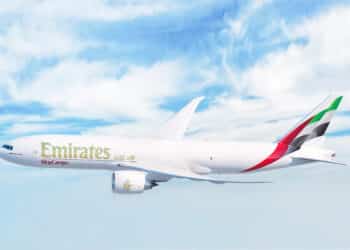The distribution of widebody freighters — Part II

Yesterday we began an analysis of the way the 1,002 widebody freighters currently in service are operated and how the different types of widebody freighters are distributed within the fleet by type. You can read Part I here, and today we conclude with an examination of the distribution by manufacturer, by operator type, and by geographical region.
In terms of the composition of the fleet by manufacturer, the resurgence in demand for the 767-300F pushed Boeing’s share of the medium widebody fleet to 50.8% last year, and that has increased to 52.3% this year. With outstanding orders for seventy-five 767-300Fs, as opposed to just six A330-200Fs, and the boom in 767-300BCF/BDSF conversions, Boeing’s share will grow substantially over the next few years.
Boeing continues to have the large-capacity freighter segment to itself. The in-service numbers reflect a growing quantity of 777 and 747-8 freighters, but, as noted above, the number of 747 Classic, MD-11 and MD/DC-10-30 freighters in service declined. Some of the MD-11Fs and 747-400F/ERFs could be re-activated, but this does not seem likely.
The outstanding orders in the large capacity segment include thirty-two 747 8Fs (up from twenty-five last year) and thirty-seven 777Fs (down from fifty-three ). The total of sixty-nine is down nine from last year, but still a significant number.

In addition to breaking the fleet down by manufacturer, the table at right shows the distribution of widebody freighters by category of airline and by the region in which airlines are domiciled. The categories of airline used in this analysis are combination carriers (that is, carriers such as Lufthansa, Cathay, etc., that operate both passenger and freighter aircraft); express carriers (DHL, FedEx, etc.); scheduled-service all-cargo carriers (e.g. Cargolux, and AirBridgeCargo Airlines); and specialist all-cargo carriers (e.g. Atlas Air and Air Atlanta Icelandic). Note that members of the specialist group operate most of their freighters on an ACMI or CMI basis in support of combination and express carriers.
Several interesting factors become apparent when examining how widebody freighters are used:
- While only 65% of the medium-capacity widebody freighters are operated today by express carriers, almost all of the 16% operated by the specialist carriers are operated for the express carriers. Add in the ten 767-300Fs that All Nippon Airways operates in its own express network, and the express total rises to close to 85%.
- Large-capacity freighters, once predominantly used by combination carriers, are now almost equally used by express operators – perhaps even more so, after adding the freighters ACMI leased by the express carriers.
- On an overall basis, taking into account both the medium- and large-capacity freighter types, express carriers have a 46.8% share of the global widebody freighter fleet, versus 26.0% for combination carriers, 12.0% for scheduled-service all-cargo carriers and 15.2% for specialist all-cargo operators. But again, we note that many of the ACMI operators fly for the express companies.
- Nearly 70% of the medium widebody freighters are operated by airlines based in North America, nearly all by, or in support of, the integrators, and unchanged from last year. Future deliveries indicate the North American share will increase going forward. FedEx, UPS, and ABX Air are the main operators, although Atlas is moving strongly into this segment.
- North America-based carriers operate over 40% of the large capacity widebody freighters, while Asia/Pacific carriers have a 28% share. But while most of the large widebodies in North America are operated by Express or ACMI carriers, most of those in Asia (and in Europe) are operated by combination carriers and scheduled service all-cargo carriers. A look at the outstanding orders for large widebody freighters shows that these percentages will not change much, although the North American and European shares will both show a modest increase at the expense of the Asian share.
Those interested in learning more about the current makeup and future growth of the widebody freighter fleet should join us at Cargo Facts Asia in Shanghai, April 25-26, where the subject will be explored from many viewpoints. For more information, or to register, go to CargoFactsAsia.com.





